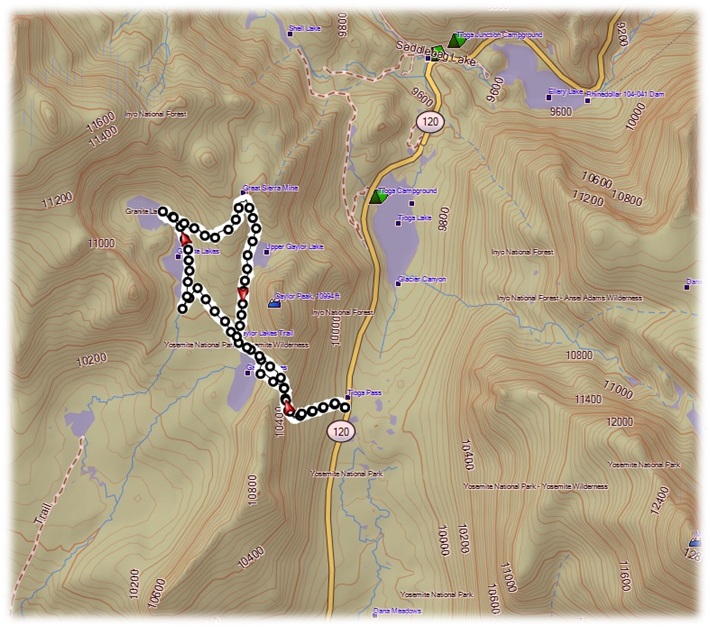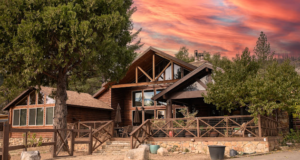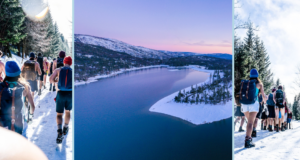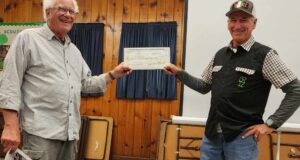Our footprints were the first ones on the fresh snow for most of our hike and I just love it when that happens! We also had very blue skies and white puffy clouds to walk along the ice covered lakes up to the old mining town of Dana City.
Where: Yosemite National Park We parked our car at the parking lot at the Tioga Pass East Entrance to Yosemite, utilized the nice clean restroom and headed up the trail. We didn’t know what kind of trail conditions we would have. Would it be a lot of snow that we would need our snowshoes for or could we hike without them? We lucked out and did just fine in our freshly waterproofed hiking boots.
As we hiked up the trail, we walked through some areas that still had snow on it but the bigger issue was the melting snow that was running down the trail in places. Some areas were just plain wet and muddy.
After we made it through the trees, we topped out where we could take in a gorgeous view of Mt. Dana, Mammoth Peak, the Kuna Crest and many others snow coated high points.
From the saddle below Gaylor Peak, we took in a breathtaking panorama of red rocks, white snow, and blue sky.
There was not a bad view on the hill. There are three Gaylor lakes and this was my view when I caught my first glimpse of the middle lake.
Of course, we wanted to get down to the lake and entire north side of that mountain, including the trail was covered by snow, so you know how we got down the hill. Butt sliding!
The lake was frozen over and stunning! As we walked along the lake, there was a snow covered wonderland as far as we could see. A very small amount of melt could be seen along the upper end of the lake. (Photo of me walking along the lake by Gail Gilbert)
You are probably wondering who these beautiful lakes were named after and usually what you find is that they were named after Park Ranger Andrew Gaylor who served in Yosemite from 1907 to 1921, dying of a heart attack while on patrol at Merced Lake. I wanted to know more about this man, and boy did I find it out!
Donald Earl McKinney Jr. has put together some in depth information on Andrew “Jack” Gaylor on his website (link at end of blog). It is a wonderful resource with tads of information about this interesting man who packed more into one life than I can imagine. He has graciously given me his blessing to utilize his information for my blog.
Below: Andrew “Jack” & Sarah (Pendleton) Gaylor
Andrew Joseph “Jack” Gaylor was born January 7, 1846, probably near McMinnville, Warren County, Tennessee. Tensions related to the Civil War helped motivate many families in these states to move to Texas, as was probably the case of Andrew’s parents and his first wife’s family. Andrew was married three times. His first marriage was to Sarah Elizabeth “Sallie” Pendleton in 1867 at Collin County, Texas and they had five children.
After her death in 1886, he remarried to Margaret Rutledge in 1890 in Sinks County, Wyoming. They weren’t married too long though and because of her inability to get along with Jack’s daughter, he divorced her. In 1899, he married Elizabeth “Lizzie” Shinholser in Macon, Georgia, remaining happily married until his death.
There are so many stories that I learned about Jack Gaylor’s life. Here are a few excerpts courtesy of Donald Earl McKinney Jr. Back in the day, a man did many things to earn a wage and put food on the table. It is believed that Jack Gaylor was also a horse wrangler in his early years in Texas.
During the early years of the “open ranges” with no fences, many unbranded maverick cattle & horses were rounded up and branded by ranchers and cowboys who sometimes “threw a wide loop.” This was especially true after the Civil War, when a good horse was hard to come by since the Federal army had confiscated most of them. It has been said that Jack got mixed up in some horse dealings and had to leave town in a hurry.
After moving around a bit to Missouri, Oklahoma Indian Territory and back to Texas he ended up at Fort Gibson, Texas. Jack was a scout and freighter throughout the Indian Territory and Arkansas during that time. About 1875, after the birth of their second daughter Abbie, he and his family traveled across the Great Plains to Placerville, California where he mined for gold. It is believed that Jack’s wife Sallie and the two daughters resided briefly in Sacramento while he was mining.
The next year, Jack and his family settled in Cheyenne, Wyoming where Jack drove a stagecoach from Cheyenne to Deadwood, South Dakota. Their third daughter Emma died in infancy while they were in Cheyenne. According to his daughter Nora McKinney’s biography on file in the Wyoming State Archives in Cheyenne, he was “quite proud of his six-horse outfit when he drove in the direction of the Black Hills region.” He was a young 26 year old man in the prime of his life. During this 1876-1878 period when Jack drove this Cheyenne and Black Hills trail, the area was notorious for numerous robberies and hostile Indian attacks. Also during this period, Calamity Jane is said to have driven a stage along that route and Wild Bill Hickok made his famous trek from Cheyenne to Deadwood.
In 1880, Jack found employment with the War Department as a scout and wagon master/teamster at Fort Washakie, Wyoming. Jack made many trips with the cavalry escorted freight outfits that departed Fort Washakie, hauling & supplying materials to the various cavalry outposts and other government agencies throughout Wyoming and the Dakotas. He served with the War Department at Fort Washakie for two years, but in 1882 Jack became restless and again decided to seek his fortune in the gold mines. This time he decided that a trip to the gold fields of New Mexico might prove financially rewarding. He left New Mexico when the Indians became too dangerous and went to Boulder, Colorado, where he may have established some more mining claims. He soon returned to Fremont County and moved his family to South Pass where he established some mining claims.
With gold mining and “bull whacking” out of his blood, Jack Gaylor decided to establish a homestead in 1885 in the scenic Sinks Canyon area along the Big Popo Agie River near Lander. When Sallie died on this Sinks Canyon homestead the day after Christmas in 1886, Jack was left with the responsibility of raising 3 young children by himself. Before she died, Jack constructed a nice log house for his family and made many other improvements on the land which was required by the Homestead Act. Jack Gaylor sold his homestead in 1895 and evidently moved to Rongis on the Sweetwater River.
Jack Gaylor was also well known throughout Fremont County as a hunter and trapper. He provided meat for his family and supplemented his income by selling the pelts of the animals he killed. The following items were found in The Fremont Clipper:
January 21, 1888: “Jack Gaylor killed three elk and five mountain sheep last week.”
April 7, 1893: “A.J. Gaylor brought the pelt and horns of a very large mountain sheep to town last week. He sold it to W.A. Feiser who took it to Cheyenne to have it mounted. The animal was killed within ten miles of Lander.”
March 4, 1898: “A.J. Gaylor of Rongis was in town Saturday and Sunday, having brought in a wagon load of coyote and wolf pelts. Mr. Gaylor is one of the best wolf trappers in the state. He informs us that he will soon start for Klondike in company with two Colorado miners, who are now on Sweetwater getting together an outfit. They will go overland via Fort Union and expect to reach Klondike about the first of September.”
Mar 4, 1898: “WANTED, TWO DOGS – I will pay $25 each for two Russian Wolf Hounds that will weight 140 pounds delivered to me at Rongis, Wyoming, or at James Graham’s ranch on the Sweetwater. Want them in the next three weeks. A.J. GAYLOR, Rongis, Wyoming”
Jack soon transferred to the 7th Cavalry at Huntsville, Alabama and went to Cuba during the U.S. military occupation. While with the 7th Cavalry at Macon, Georgia, he met his third wife, Elizabeth Shinholser,who was about 16 years his junior.
This was a very happy marriage for Jack and Elizabeth. She remained in Macon, Georgia while he went to the Philippines later that year. Jack and Elizabeth had no children from this marriage, but Elizabeth stood by him and patiently waited for him to return from his adventures, just at his first wife Sarah did. He was Chief Packmaster under General Funston and was stationed at San Isidro, Mueva, Ecija, in the Philippines. The capture of Aguinaldo, the revolutionary President, by General Funston in March 1901 at Luzon virtually ended the main insurrection, and Jack returned to the States the following year.
Jack brought his young wife Elizabeth to California where he was stationed at the Presidio of San Francisco. He was in charge of the cavalry pack trains that brought supplies to the various outposts in Yosemite National Park and northern California. He gained some experience in Yosemite at fighting forest fires, planting fish and some other ranger type duties while on temporary duty. He became acquainted with Major H.C. Benson who was the Acting Superintendent of the park before the National Park Service was established.
Because of Jack’s natural abilities and his love of nature, he was perfect for this type of ranger position and was consequently appointed as a Park Ranger at Yosemite by the Department of Interior in September 1907. The pay was $900 a year. At this time there were only 6 of these permanent “first rangers” who had to patrol the entire Yosemite area. The following is from the History of the Sierra Nevada, by Francis P. Farquhar:
“Beginning in 1898 a few forest rangers (afterwards called park rangers) had been employed, but it was not until 1914 that a permanent ranger force was established. Among these “First Rangers” were Charles Leidig, Archie Leonard, Henry Skelton and Jack Gaylor, who established a fine tradition of devoted public service.” In the spring of 1921, he contracted the flu which left him in a weakened condition.On April 19, 1921, Andrew “Jack” Gaylor died suddenly of a heart ailment while sitting at his campfire at the Merced Lake Ranger Station while patrolling in Yosemite National Park. His wife, Elizabeth, moved back to her native Georgia where she died in 1949.
21 Apr 1921 – Merced Morning Sun, Merced, CA (Obituary)
“ASST CHIEF RANGER DIES IN YOSEMITE NATIONAL PARK – A.J. Gaylor, assistant chief ranger in Yosemite National Park, died suddenly at Merced Lakes Tuesday, April 19. The body will be brought to Merced for burial Thursday, April 21, and will be accompanied by Mrs. Gaylor who was in Yosemite at the time of his death. The time for the funeral will not be fixed until the arrival of the body in Merced and will be under the auspices of Yosemite Lodge No. 30, Knights of Pythias, Mr. Gaylor having been a member of Phoenix Lodge No. 4 of San Francisco.”
22 Apr 1921 – Merced Morning Sun, Merced, CA (Funeral Notice)
“GAYLOR FUNERAL TO BE HELD HERE AT 10 A.M. TODAY – Funeral services for A.J. Gaylor, assistant chief ranger in the Yosemite National Park, who died Wednesday at Merced Lakes, will be held here this morning at 10 o’clock at the Chapel of Welch & Griffin, Eighteenth Street at M. The services will be in charge of Yosemite Parlor, Knights of Pythias. Mr. Gaylor was a member of Phoenix Lodge, San Francisco. Interment will be in Knights of Pythias cemetery.”
(Excerpts from GUARDIANS OF THE YOSEMITE (Copyright 1961): A Story of the First Rangers, by John W. Bingaman) Brief excerpt from his biography of Jack Gaylor: ” – – – – He died of a heart ailment at Merced Lake Ranger Station the night of April 19, 1921 while sitting before his campfire. He was on a high mountain patrol and died with his boots on just as he would have wanted it. Andy Swartz a young bookkeeper for the Park Service was with him when he died.
His last ride was down his favorite trail, across his saddle horse with both ends tied down. – – – -I remember him very well, patrolling the trails, always on the watch for law violators and forest fires. He always carried a 45 Colt revolver, and a Winchester Carbine and rode a fine mule for many years.The Gaylors lived in the George Fiske house across from the foot of the Four Mile Trail, on the bend of the Merced River in 1918 . . .”
(Letter in 1985 from Retired Ranger John Bingaman to Don McKinney) Brief Excerpt: – – – – – “Jack as I remember was a tall, handsome man, and when you met him, especially while he was on patrol in the saddle, he was man you never forgot, he was that “outstanding”. He looked you straight in the eyes and you never forgot just what he was thinking. – – – – He was all for his love of the trails and mountains, always riding the trails, and was on all trails of Yosemite National Park. He was a sight to see.”
Below: “Jack” Gaylor, Assistant Ranger, Yosemite National Park, taken about 1915
(Photo courtesy Donald-E-McKinneyJr, Yosemite National Park Library)
As we continued our hike through the new snow, we saw many critter tracks. We could make out quite a few trails made by bear, coyote, hare, squirrels and many others. We were hoping to see some pica but can’t say for sure that we did. This Clark’s Nuthatch was busy fluttering around but Gail was able to capture a picture in a rare moment where it was still.
We headed cross country to Granite Lake and when we caught a glimpse of the lower part of the lake, we wandered around to check it out closer.
We made it up to the upper of the Granite Lakes and took a lunch break on the rocks. Not a bad spot for a lunch!
After lunch, we headed cross country over to the old mining town of Dana City. We tried to avoid the snow, keeping to the rocks, but sometimes we just had to go through some snow, sometimes sinking down pretty good.
One of the reasons that I love hiking in this country is because of the rich mining history that occurred in these parts and when I am up here, I cannot stop thinking of the characters that braved this tough country to pursue their dreams of finding gold and silver.
“The Great Silver Belt”, which runs from Tioga Hill to Bloody Canyon, was where the illusive minerals were that they were searching for. Hundreds of thousands of dollars were spent. Some mines paid off, a few people made some money, but most never produced.
The old mining town of Dana City is one of these mining communities that boomed for a short while. It received a post office in 1880 and is said to have had up to 1,000 people living in it at heyday. By May of 1882,the main shaft had been mined down through the granite to over 100 feet.
At that time, management decided to change strategy and relocate to the hill above Bennettville and start a horizontal tunnel westward towards the Great Sierra Mine where the Sheepherder Lode was projected to be at. Dana was soon abandoned. If you are still hungry for more history of this area, check out the links at the end of the blog to some of my prior blogs on Dana City and the nearby mines where I focused more on the mines and the people who worked them.
Walking through the old buildings and hints of old roads in Dana City can help you get some glimpses of this ghost town and mining area that once thrived in the Lundy, Bennettville and Dana City area. Watch where you are walking because there are open mines that you needed to be careful around and not get too close to.
There is one of the old buildings, made of rock, and it is still partially standing today. Looking through the remaining window gave me the feeling that some old miner had holed up on a snowy, wintery day in the past, looking out this same window at a similar view of Gaylor Peak and the lake. Gail took this picture of me trying to capture those window views. I took pictures from several angles and for some weird reason, I had a real hard time deciding on which pictures to use. I threw it out to my Facebook friends to help me and these are the pictures that I landed on. Thank you to all of you who helped me on this: Stacie, Gabby, Bob, Janet, Pam, Bob, Michelle, Clauida, Gail, Janet, Gus, Debra, Ricki, Tonia, Steve, Margy, Kathy, and Sheila!
It was time for us to head back. We followed the trail down to the upper Gaylor Lake, then along the lake and its outlet to the middle of the Gaylor Lakes. Since we butt slid down to the lake, we had to take a different approach up the hill. We worked our way up the side of Gaylor Peak, keeping to the rocky areas to avoid the afternoon’s melting snow. If we would have stayed on the snow, we would have been sinking a lot and that is hard work!
We stopped at the saddle below Gaylor Peak, taking in that killer view. It was just so beautiful! (Second photo with me walking across the snow by Gail Gilbert)
We made it to our car and headed home, but our adventure was not completed yet. We had spotted some enormous white flowers larger than my outstretched hand, along Silva Road in the morning and stopped to take a closer look.
The plants were taller than my head and gorgeous silk like white flowers with orange centers, fluttering in the breeze. If you have ever seen these, you probably wondered what these were. They are Matilija Poppies, blooming from May until July. There are some interesting tales about these amazing flowers. Here is one.
“It is Amatil who laughs and beckons to you”, said our guide.
“Who was she,” we asked, “Some Mexican senorita that used to dwell here?” “No, senors, it was before the days of the Mexicans – ages ago, when Indians roved these hills. Her father was a great chief and very proud of his little daughter. But an enemy stole her from the canyon and she was never seen again. She grew up among strangers far away.” “Her story was brought to the old chief, years after, by a wanderer from another tribe, saying that she pined away and died, but that she promised that her spirit would come back to the canyon to sing for him again. “He used to sit alone by the stream to listen for her laughing voice, and the Indians called its waters ever after ‘Am atil haha’. The Spaniards have only changed the name a little, so it is ‘Matilija’, and up there you see the Sleeping Chieftain who still hears her happy laughter in his dreams.” ~ER Ingraham, “Where Amatil Laughs”, The Sunset, 1902
I like to stay positive in my blog but I also want to stay real. We had a very lucky day getting through the road construction. We had no delays except for a 10 minute one heading back home across Tioga Road. Our experience was an exception. There is a lot of road construction and traffic going on. They are really making great progress on the Highway 140 Ferguson Slide.
We lucked out and drove through with no delays but you should expect them. They were finishing up the tunnel repairs and traffic was restricted to one lane. They are moving quickly on the road paving project on Tioga Road and you should expect delays. We were really surprised that there were so many vehicles in the park on a weekday.
Maybe it had something to do with Memorial weekend a few days ago. The trailheads were packed. The roads were packed. We purposely left early in the morning, hoping to float through the construction projects with the least delay and it paid off. (Traffic photo by Gail Gilbert)
For Yosemite National Park road conditions, you can check out http://www.nps.gov/yose/planyourvisit/conditions.htm for the latest.
Sources:
http://don.mckinney.tripod.com/jackgaylor.html Prior Blogs on This Area: https://sierranewsonline.com/index.php?option=com_k2&view=item&id=4055%3Acloudy-hike-to-gaylor-granite-lakes-and-the-ghost-town-of-dana-city&Itemid=535
Distance: 4.71 Miles
Difficulty: Moderate
Elevation Range: 9,951′ – 10,760′
Date: May 27, 2015
Maps: Falls Ridge Quad
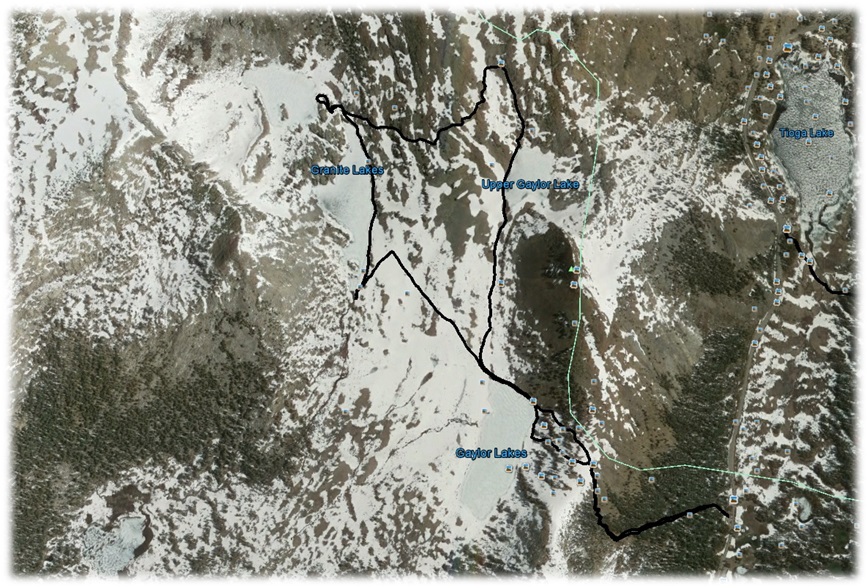
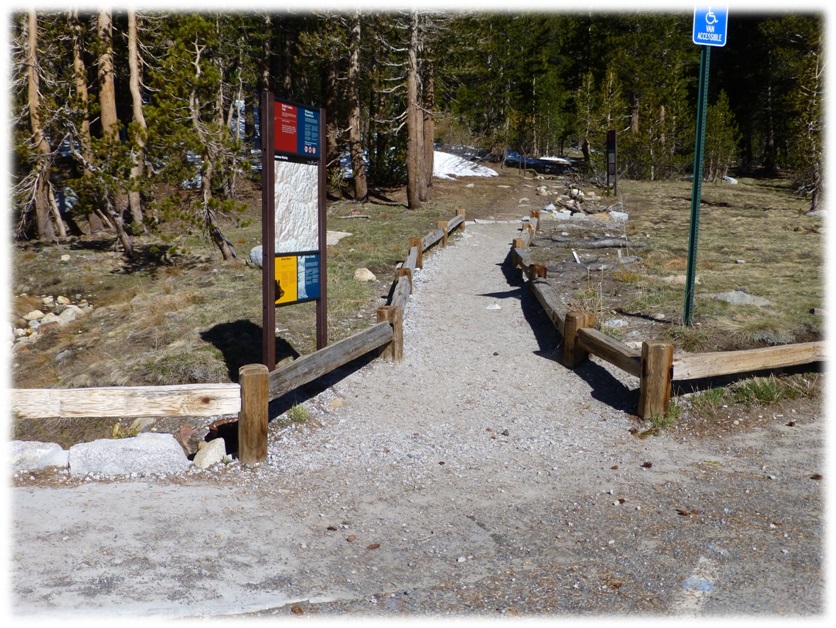
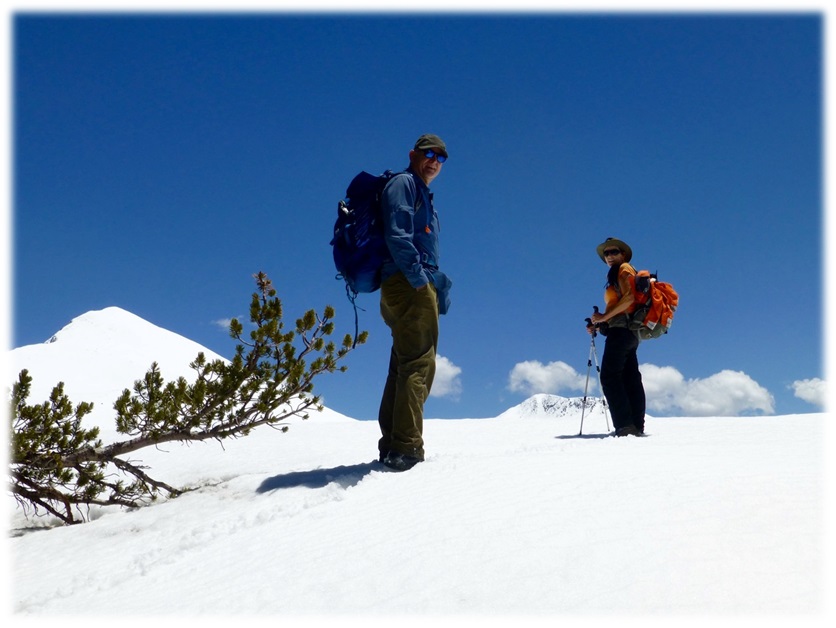
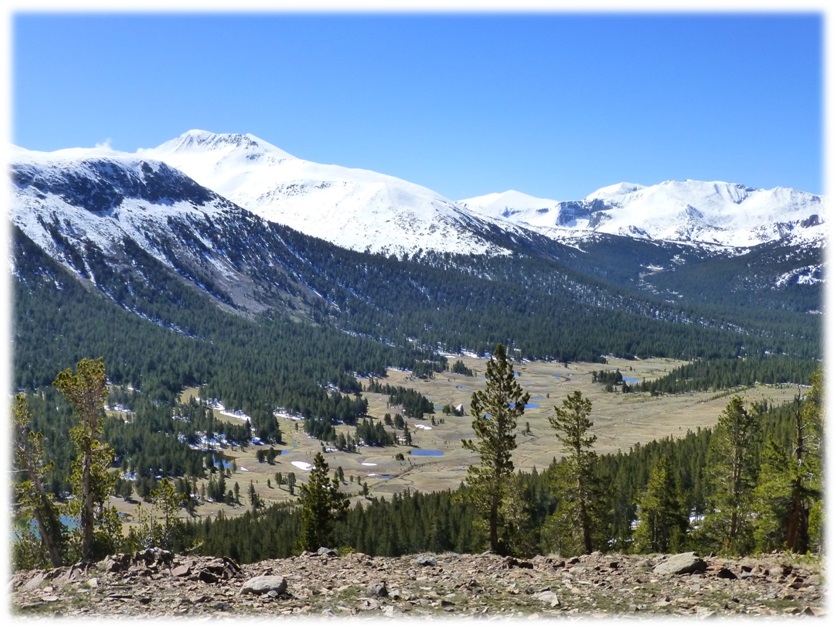
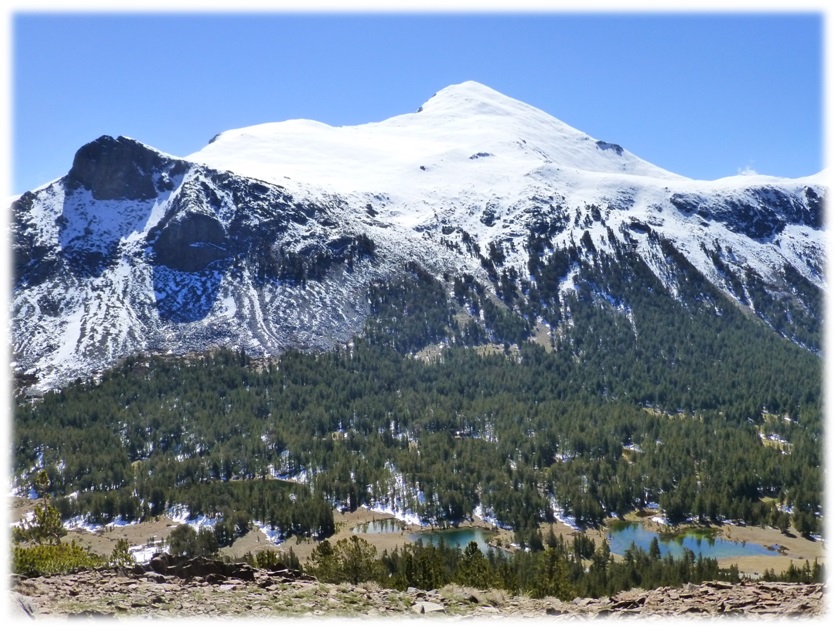
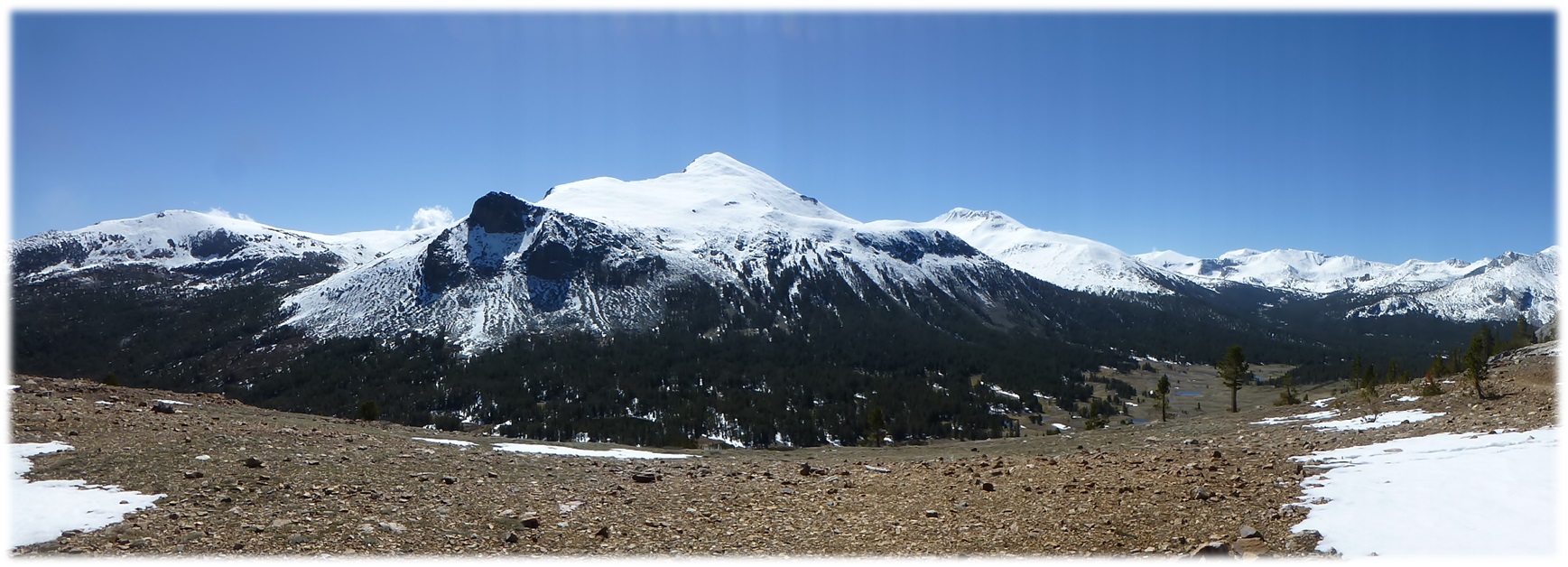
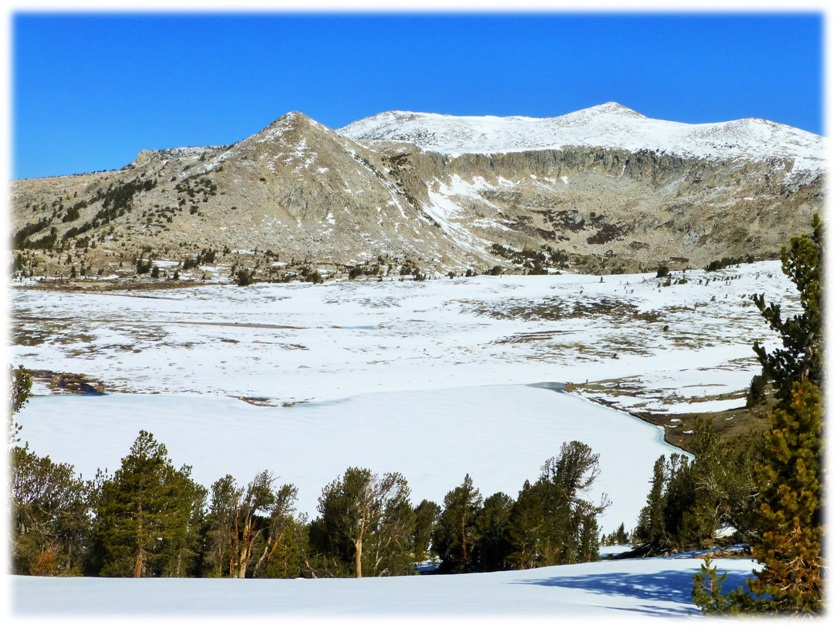
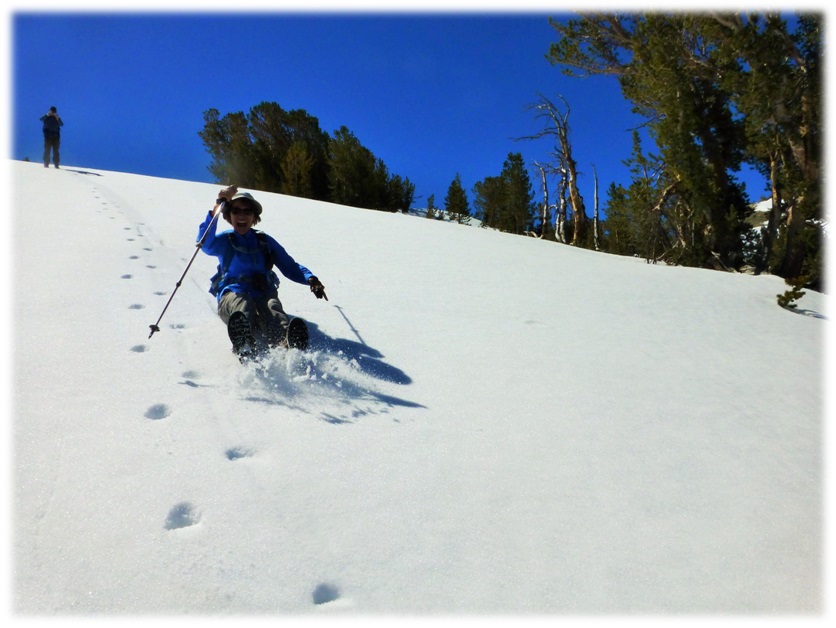
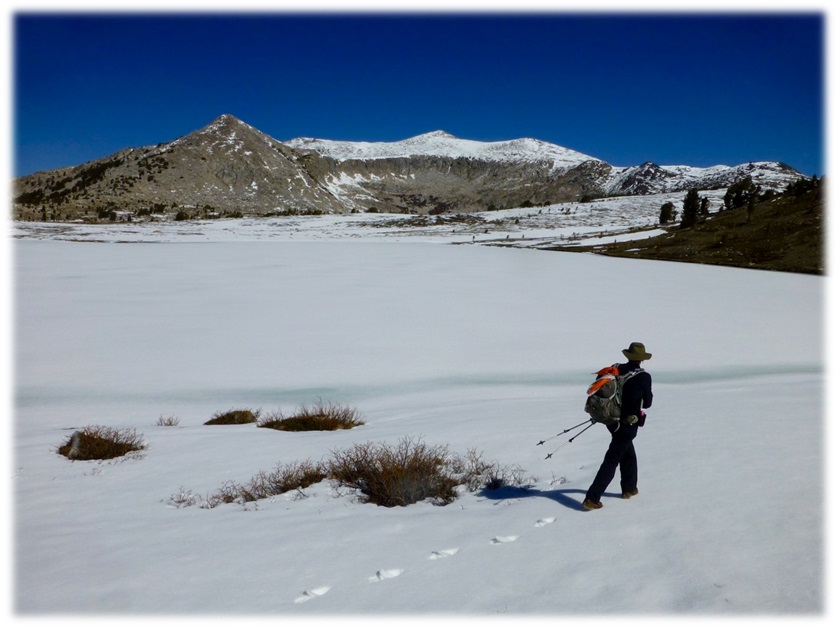
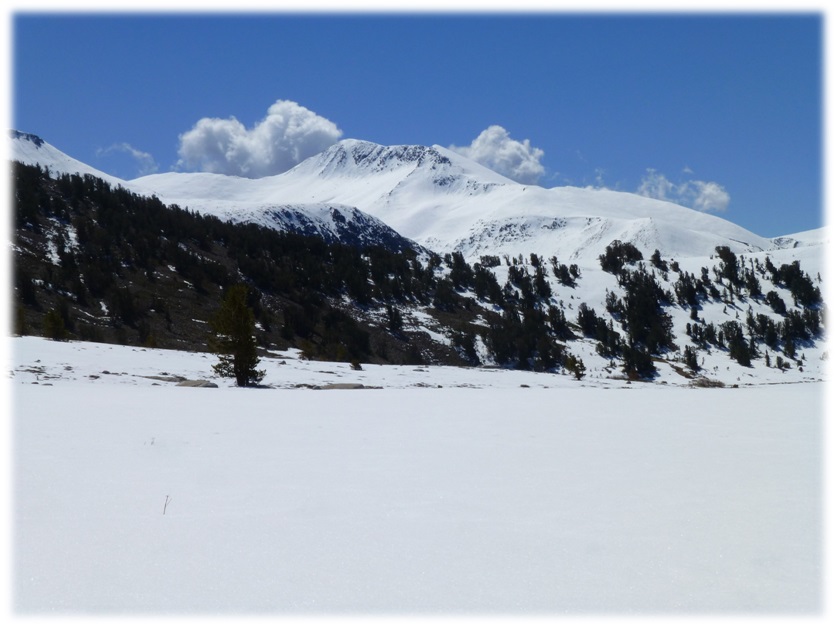
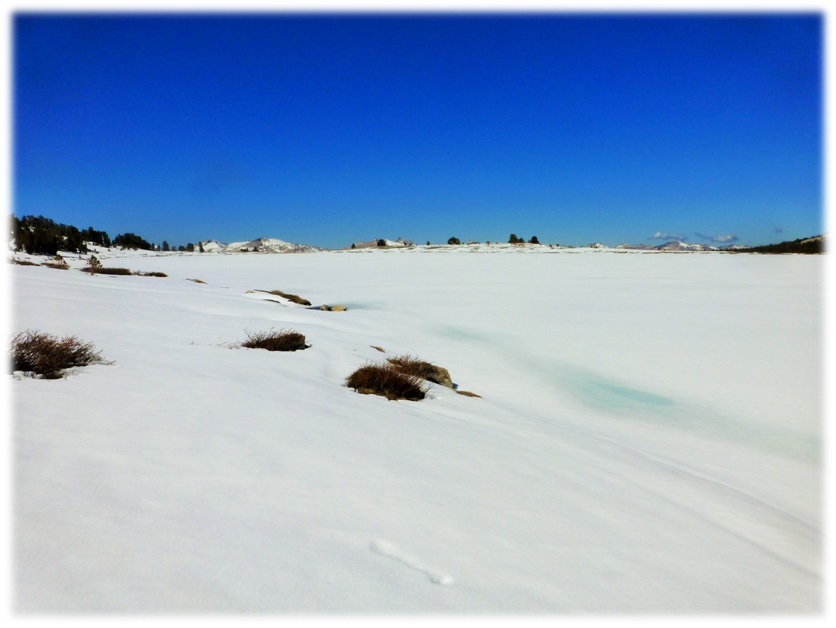
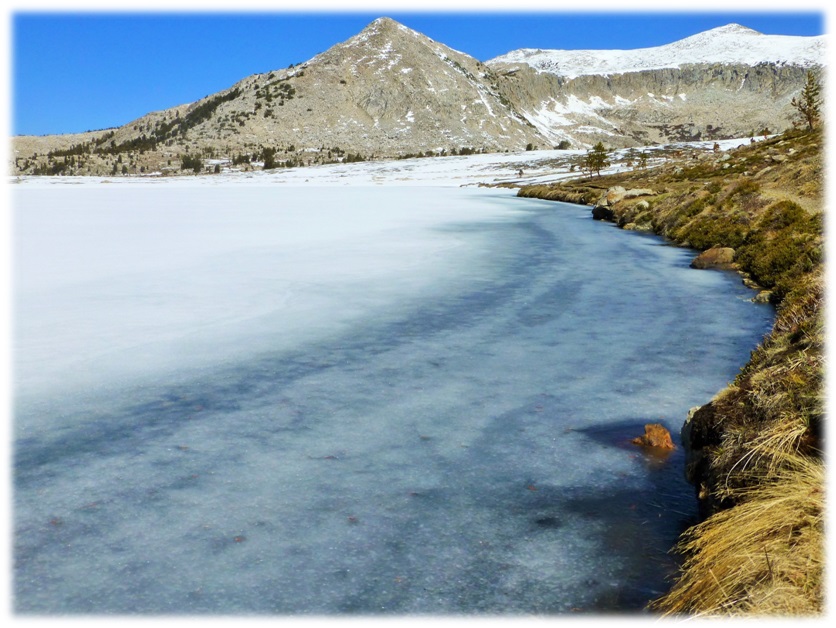
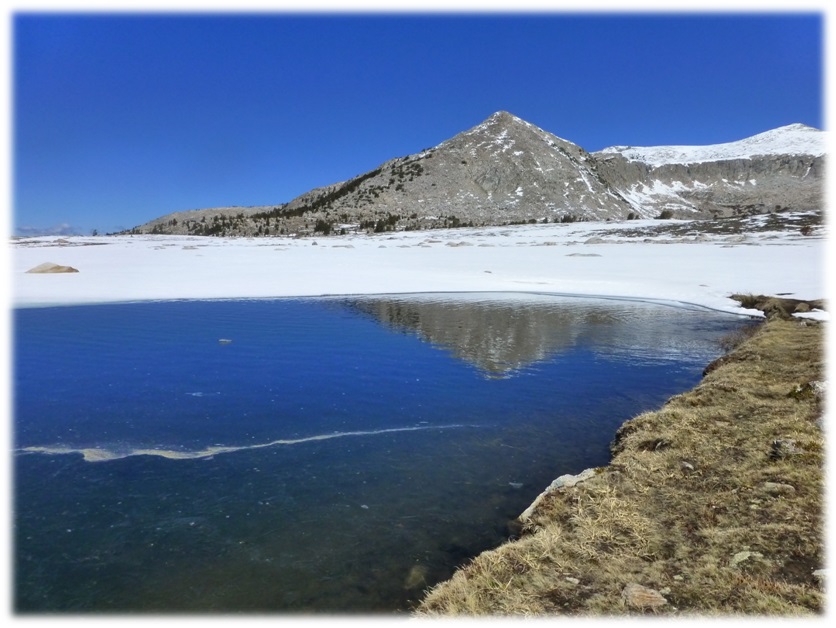
with children Nora (standing), Abbie & baby Walter
Lander, Wyoming, 1885 (Picture courtesy of Donald Earl McKinney Jr)
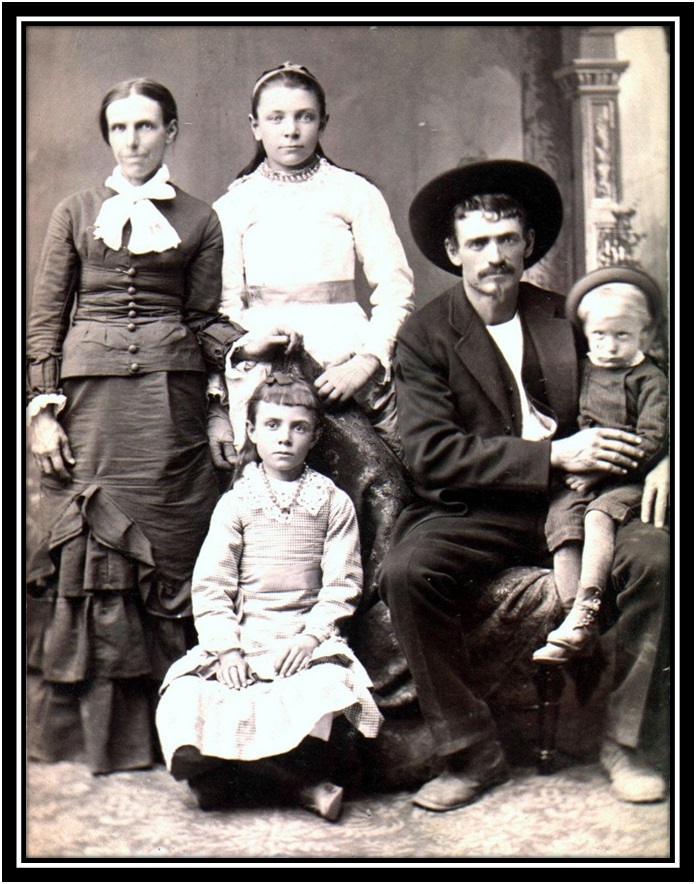
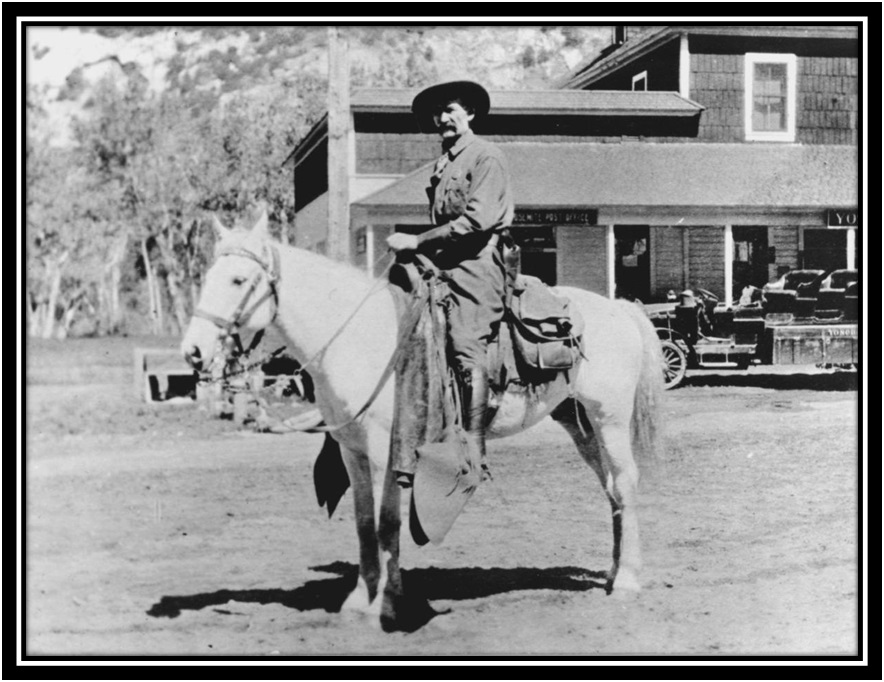
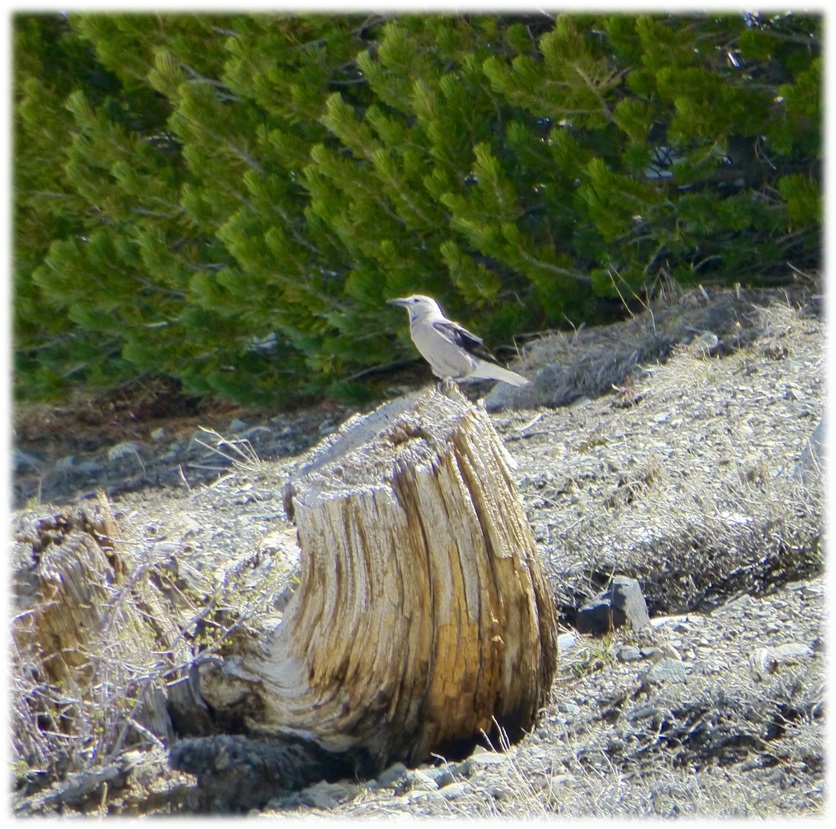
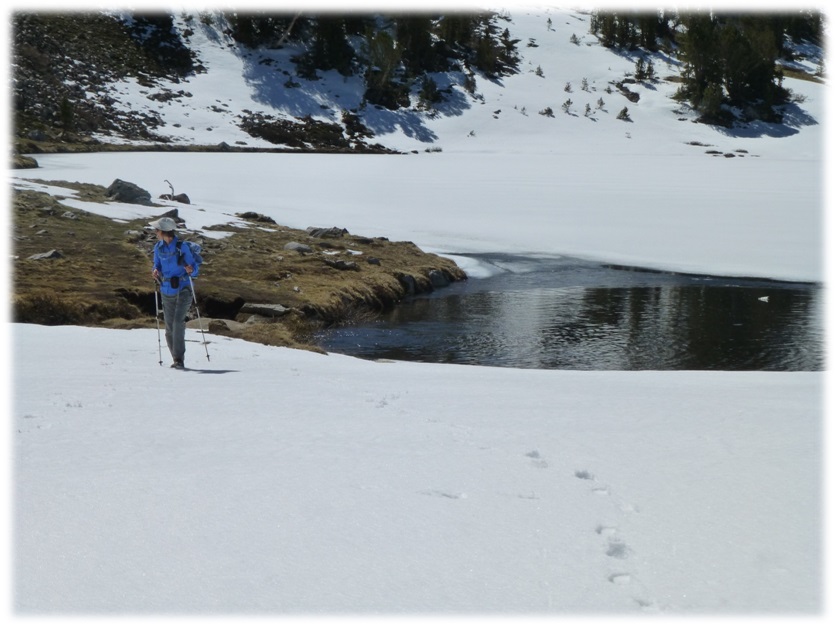
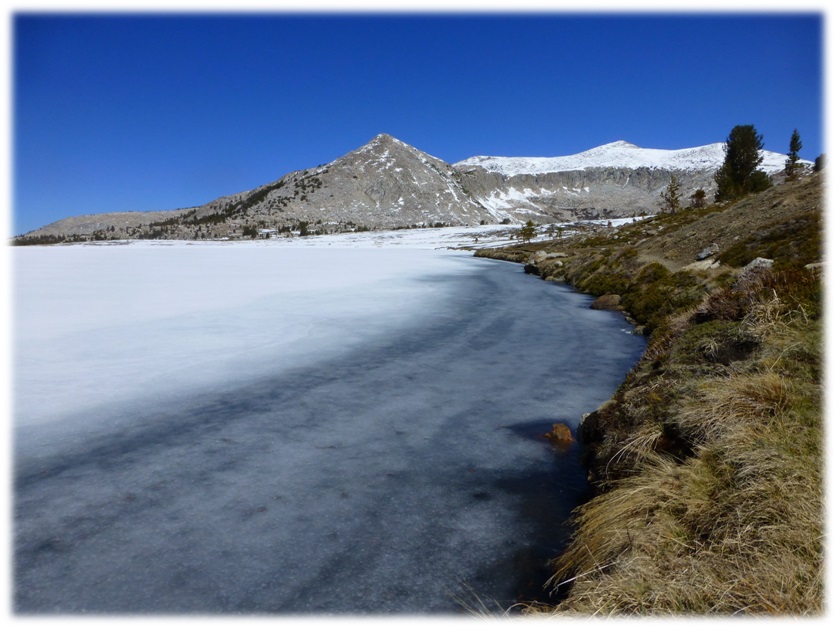
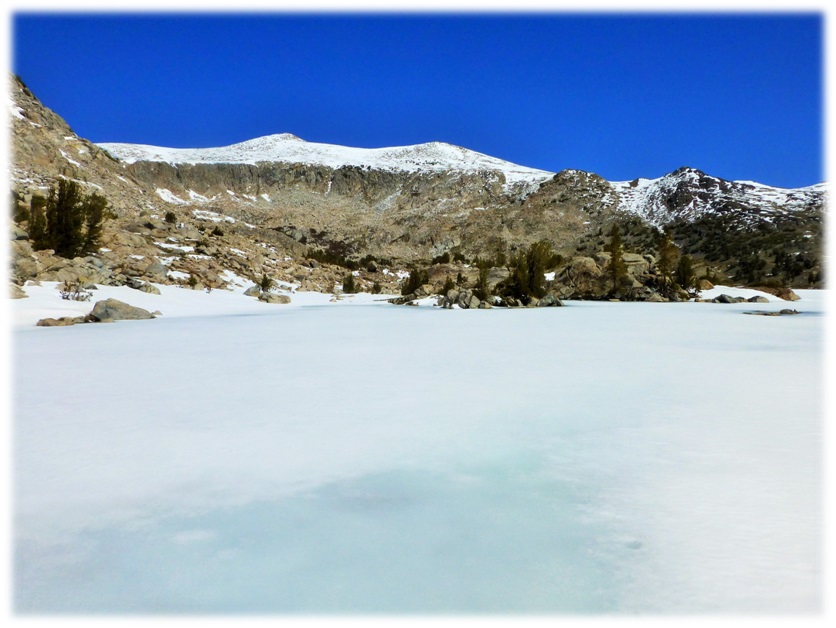
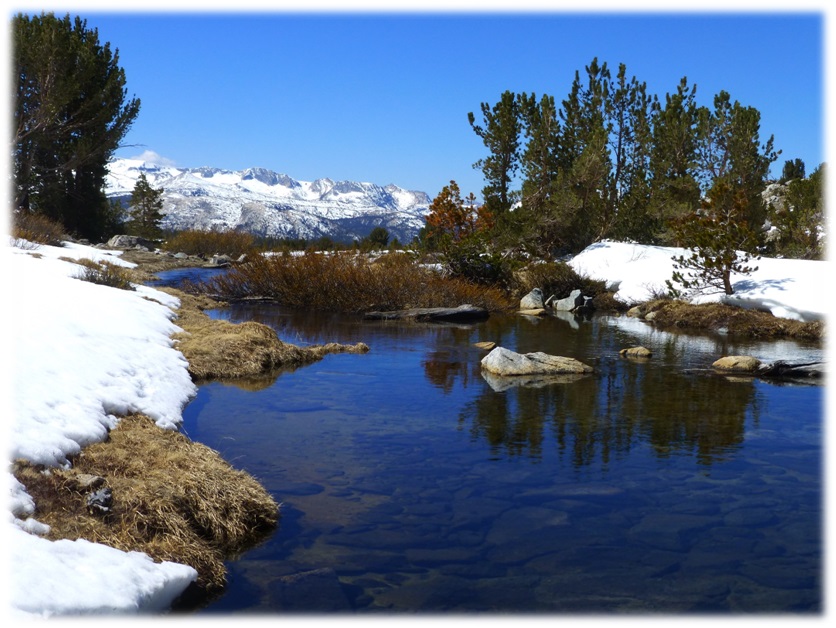
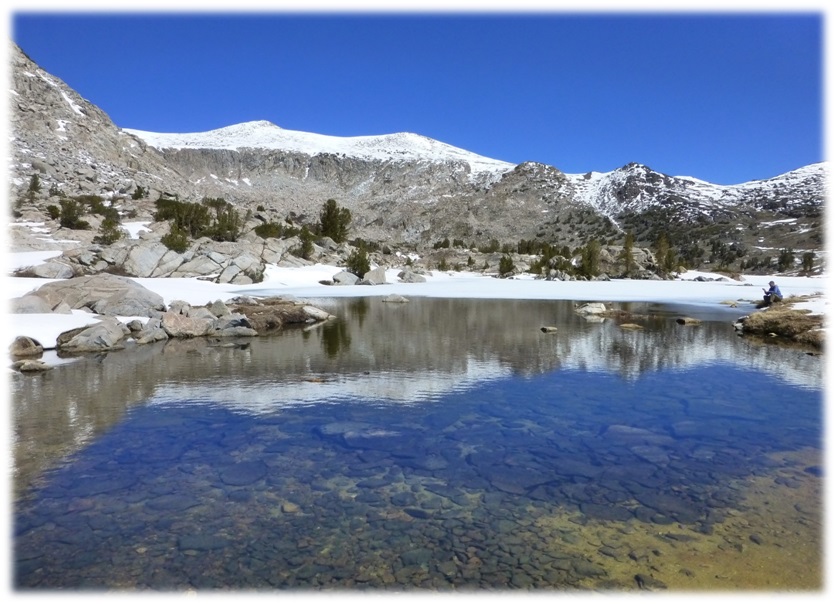
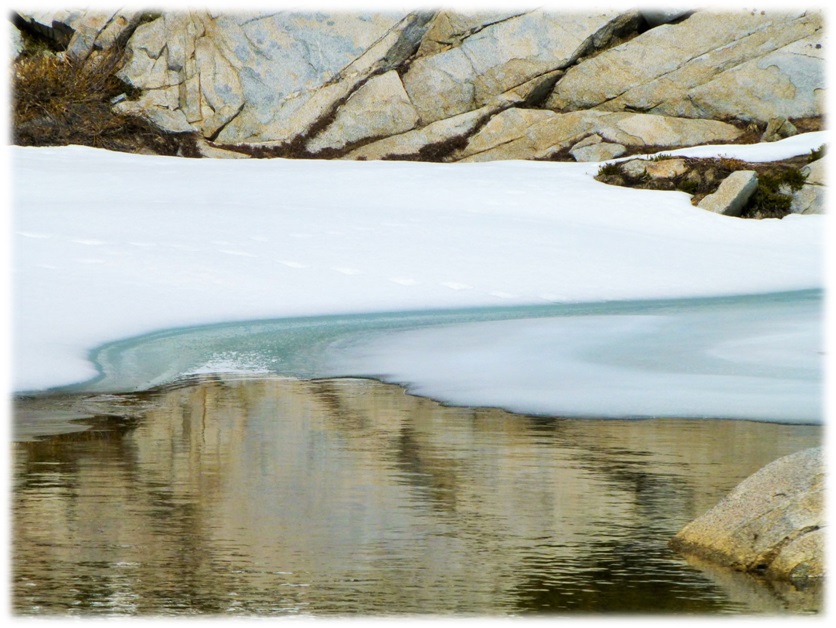
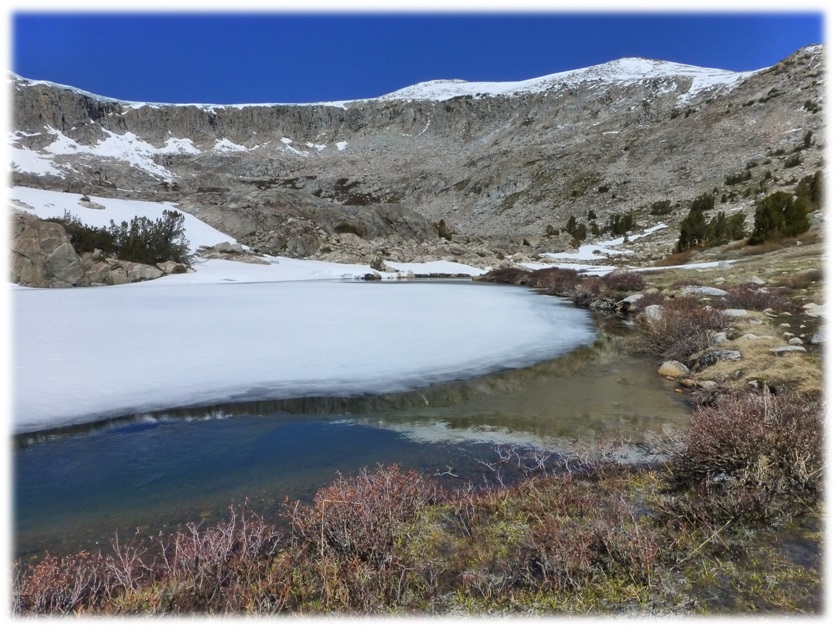
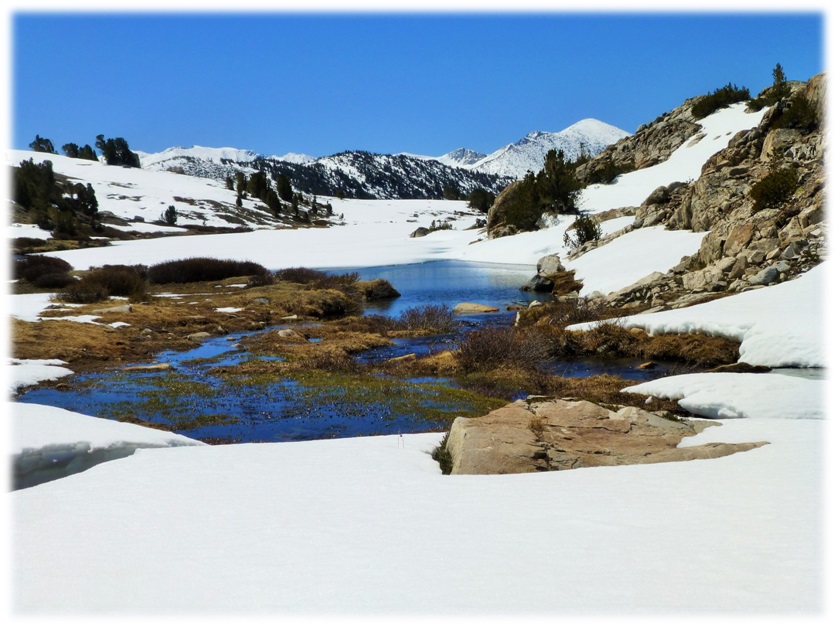
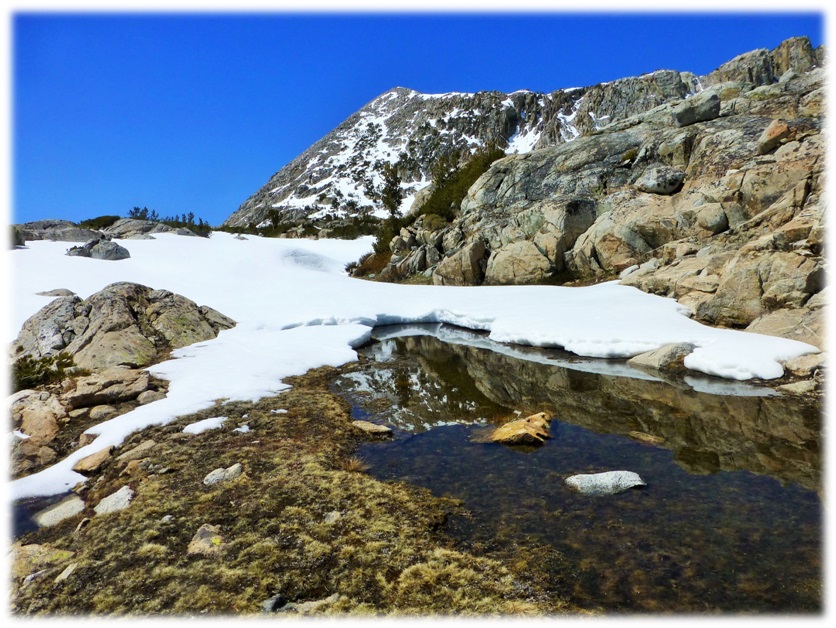
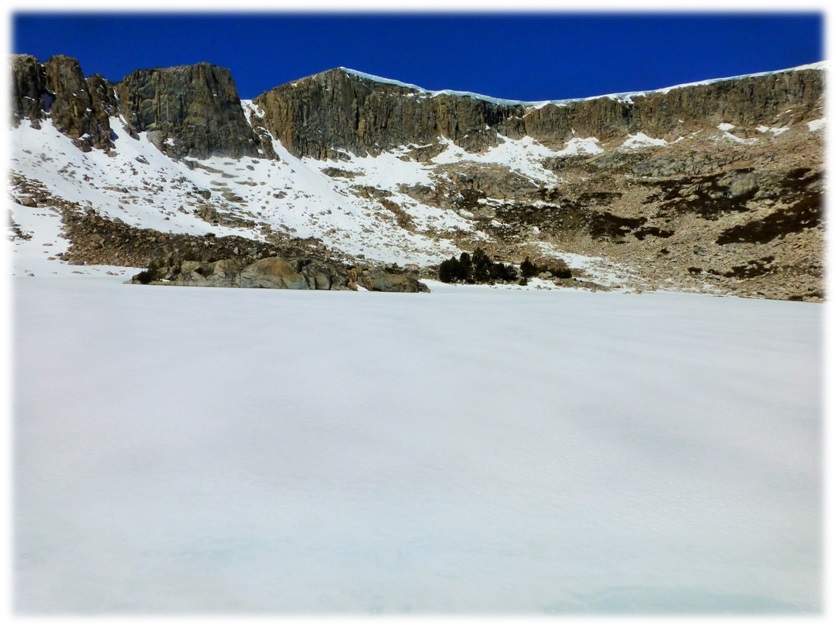
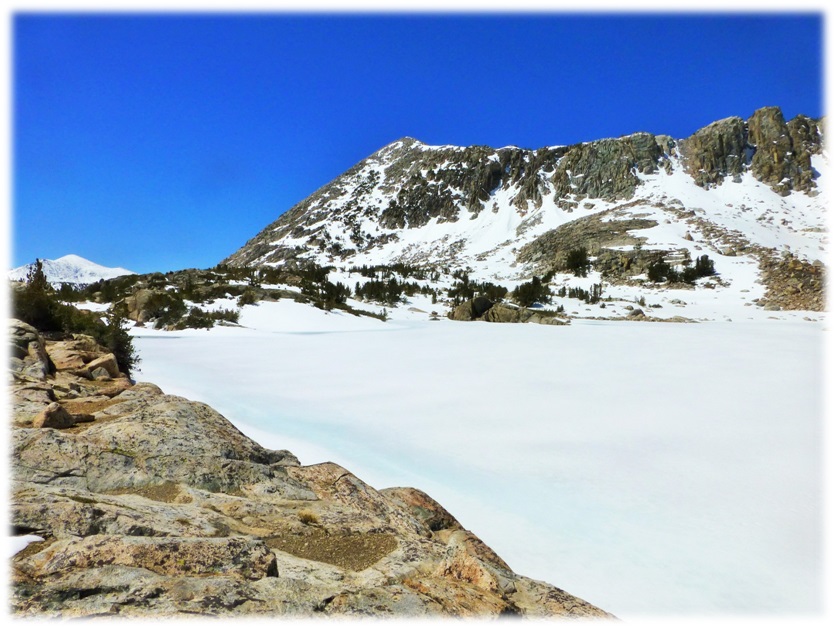
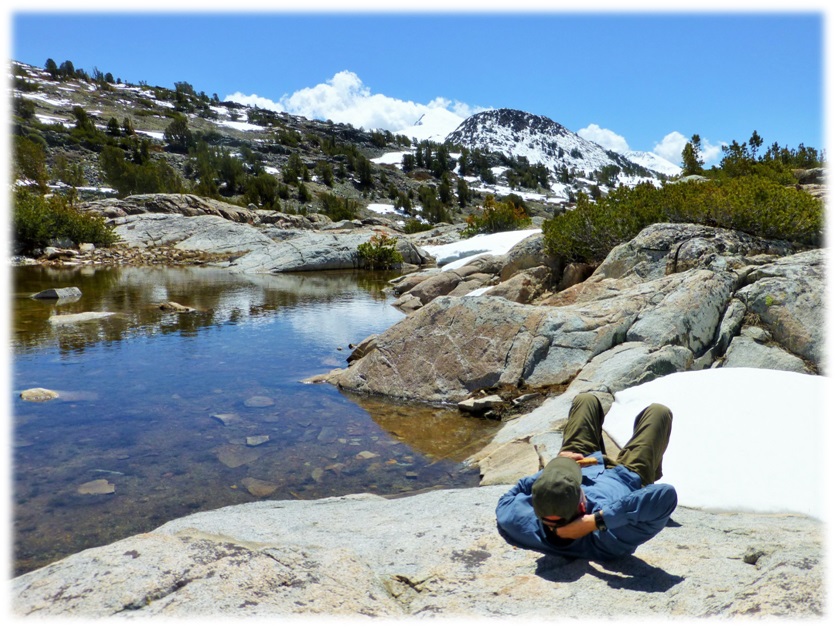
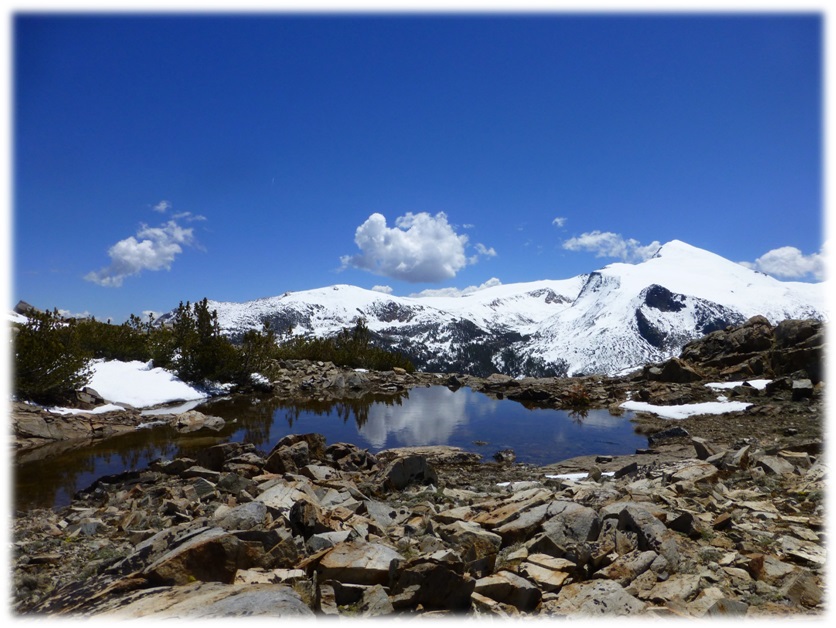
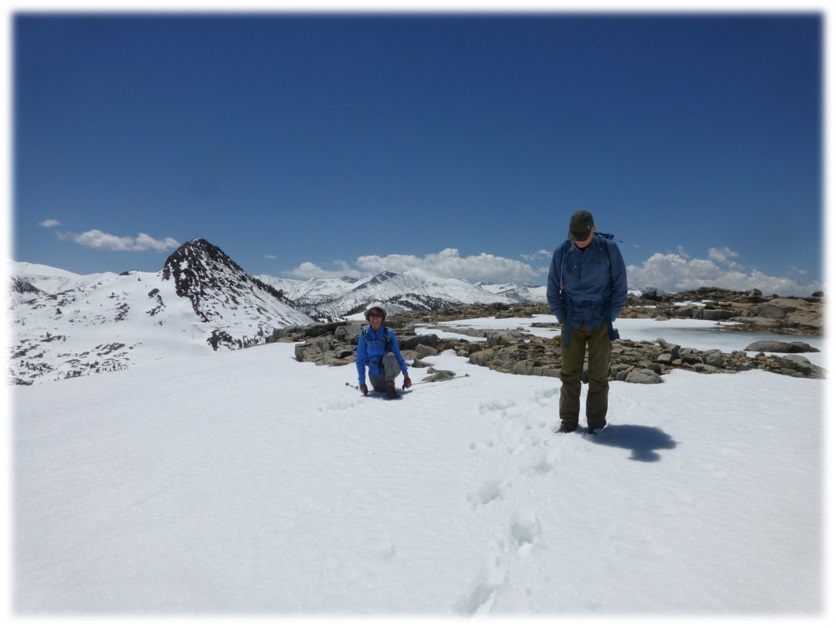
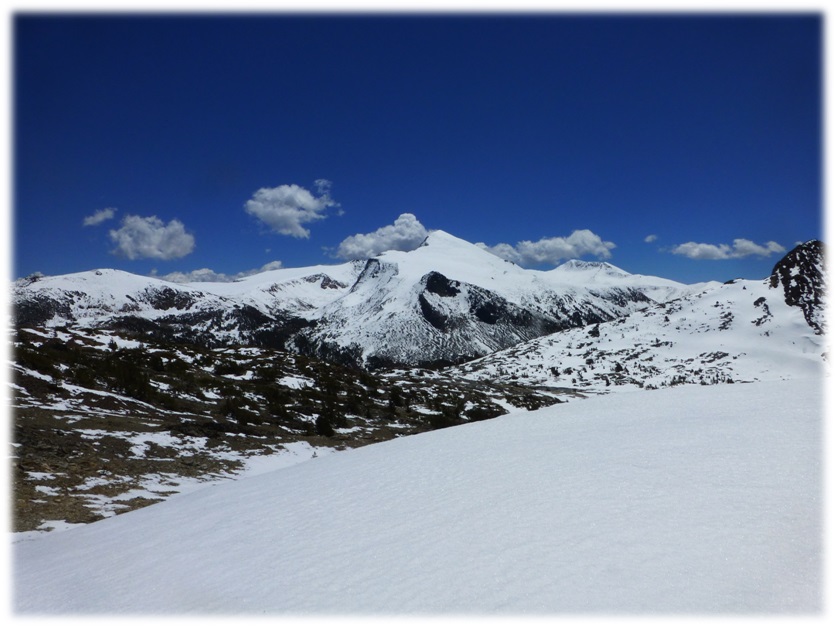
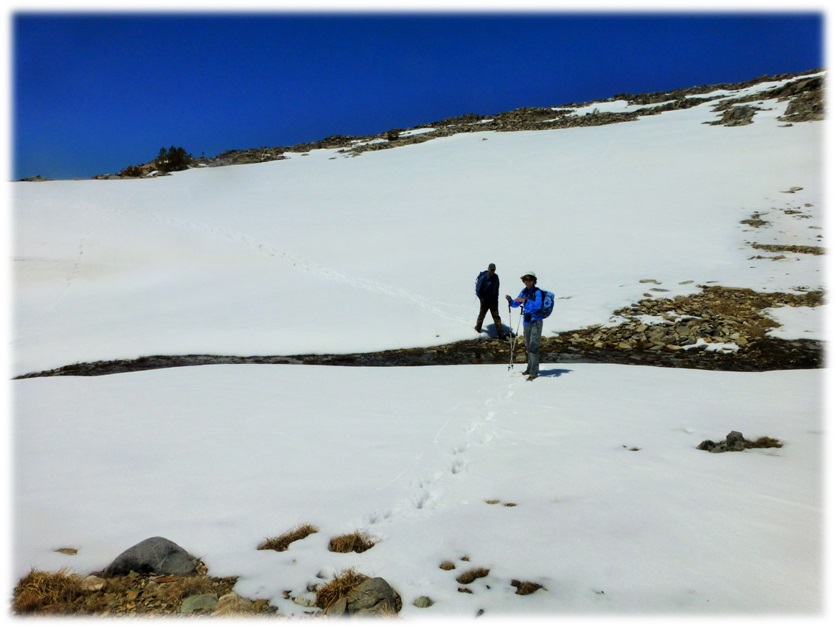
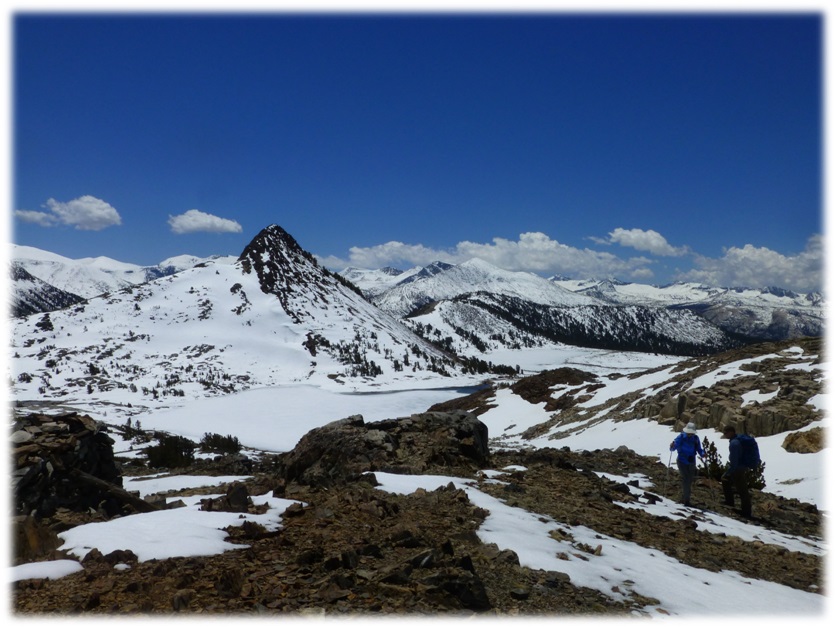
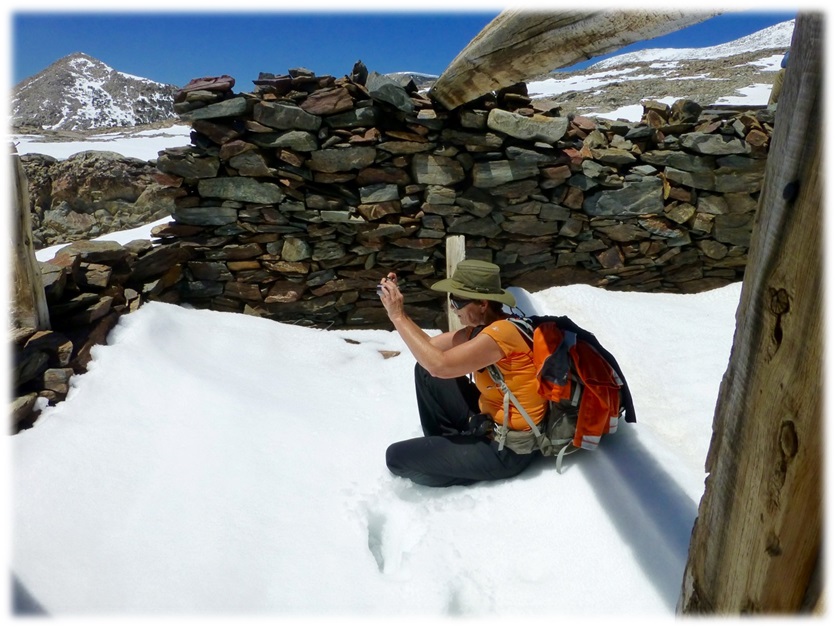
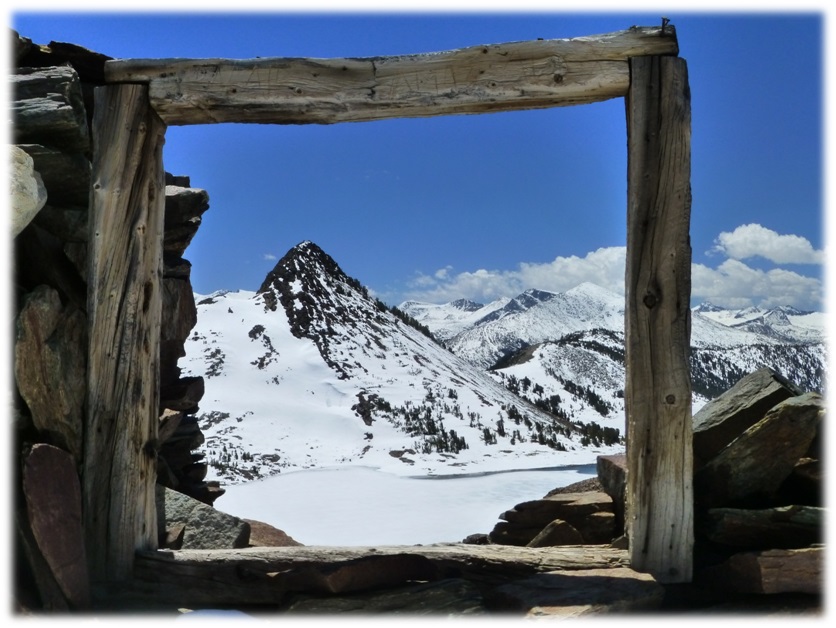
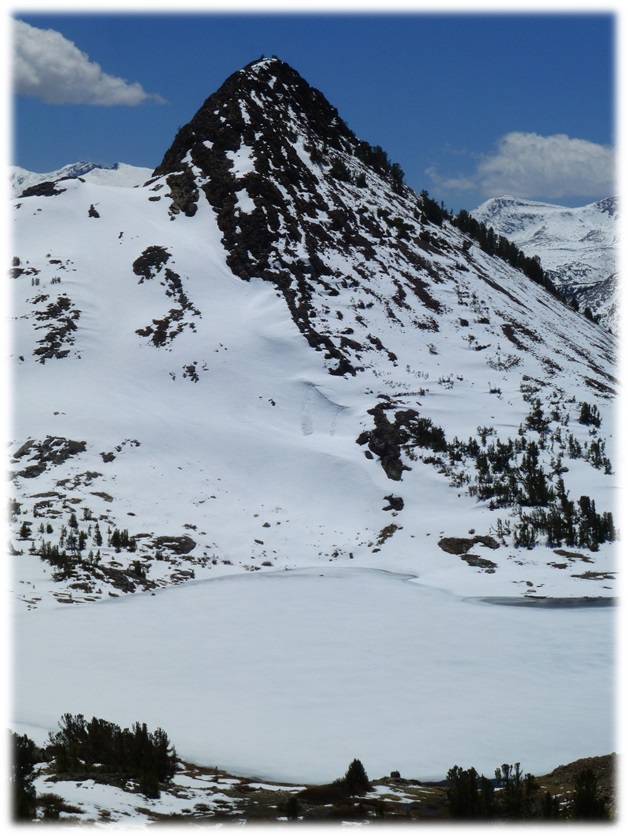
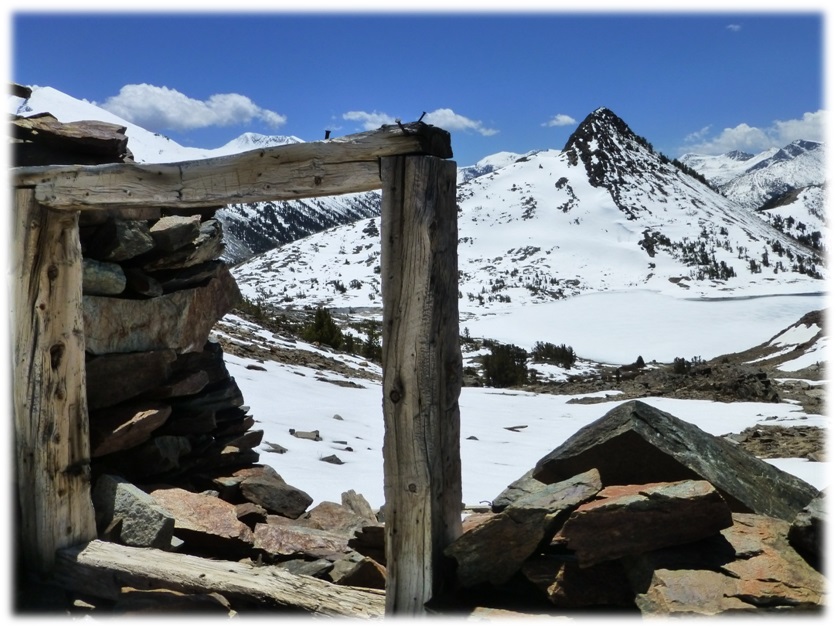
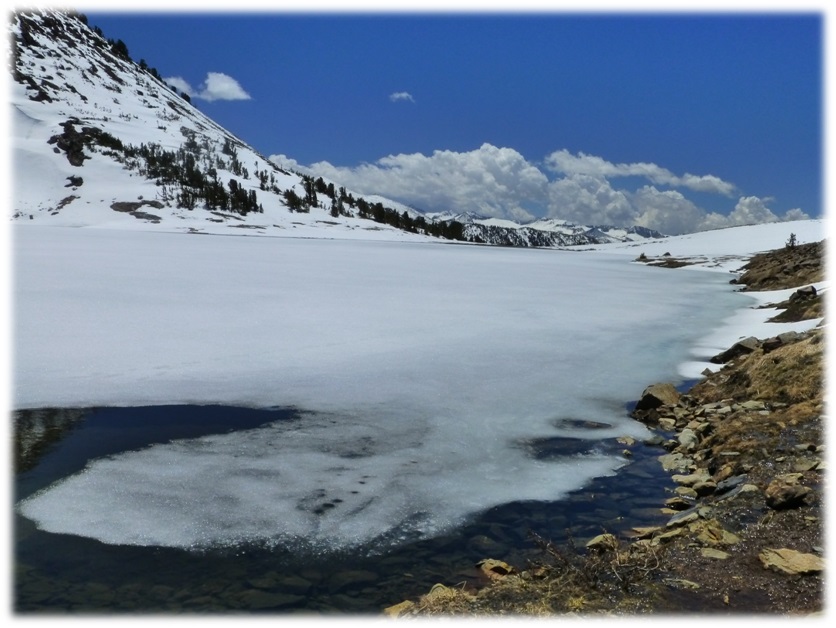
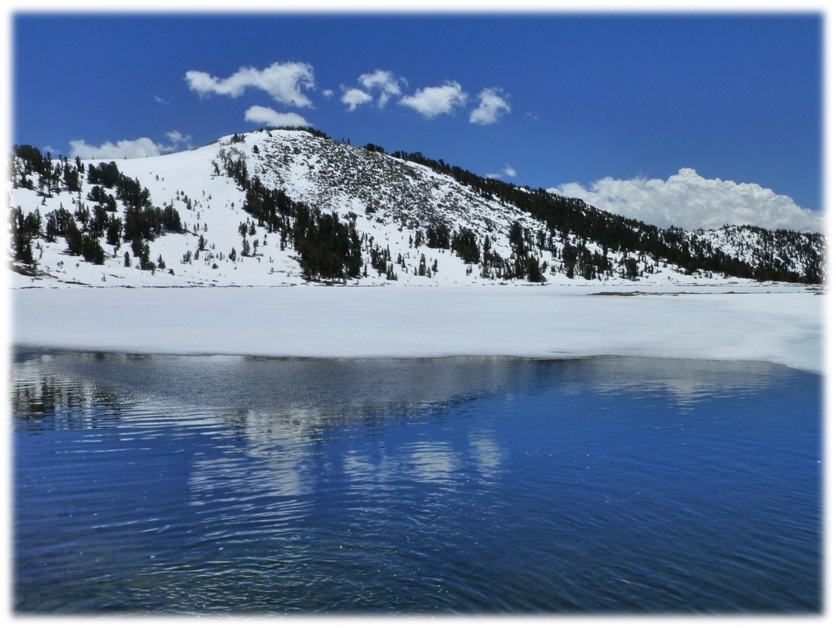
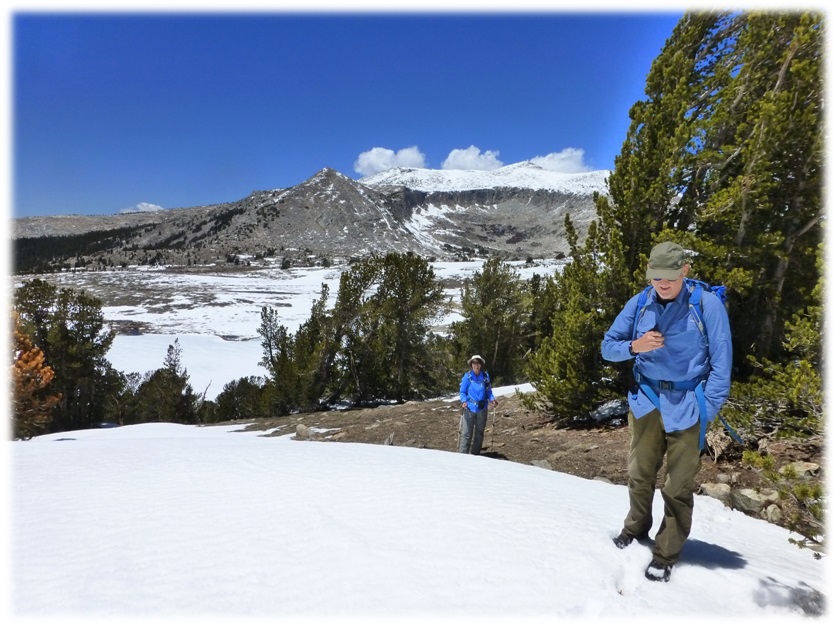
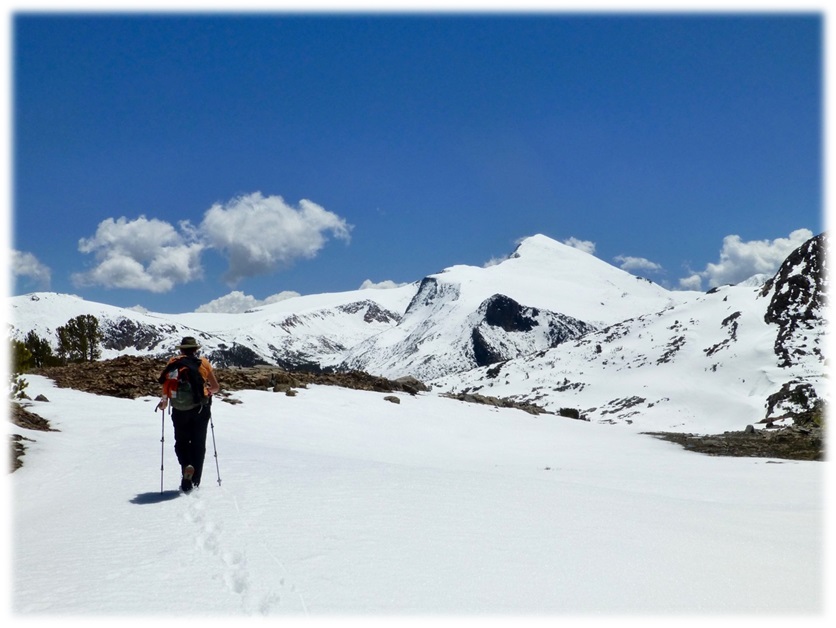
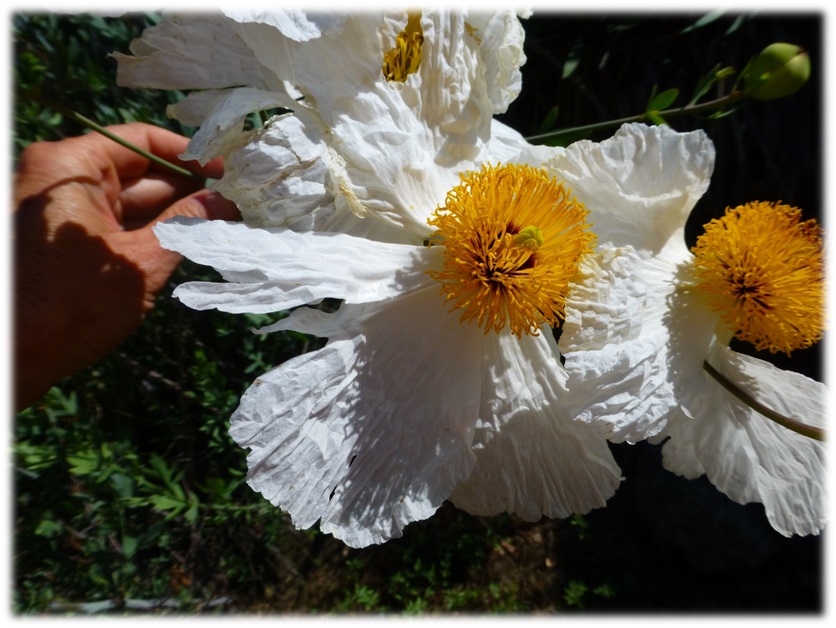
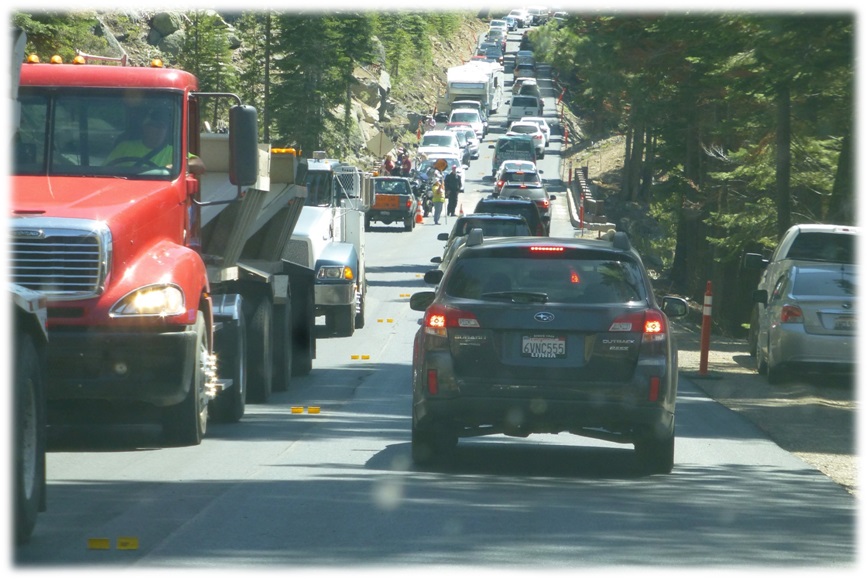
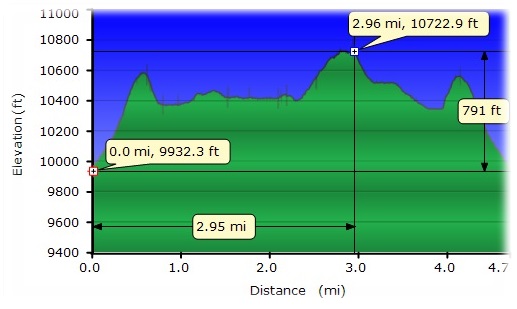
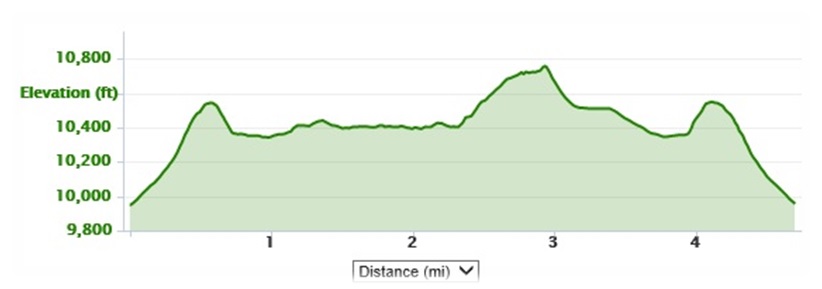
http://www.genealogy.com/ftm/m/c/k/Donald-E-McKinneyJr/index.html
http://www.yosemite.ca.us/library/guardians_of_the_yosemite/
http://en.wikisource.org/wiki/Tioga_Road_%28HAER_No._CA-149%29_written_historical_and_descriptive_data
Day Hikes in the Tioga Pass Region, John Carroll O’Neill & Elizabeth Stone O’Neill, 2002
Hubbard, D. H.,Ghost Mines of Yosemite, 1958, Awani Press, Fresno.
Russell, C. P., Early Mining Excitements East of Yosemite, 1928, SCB, 13(1):40-53
http://www.yosemite.ca.us/library/ghost_mines/discovery.html
http://www.mindat.org/loc-83377.html
http://cartas.typepad.com/main/2010/05/matilija-poppy-romneya-coulteri-mythical-beauty.html#tp
https://sierranewsonline.com/index.php?option=com_k2&view=item&id=3636:gaylor-granite-lakes-snowshoe-hike&Itemid=535
https://sierranewsonline.com/index.php?option=com_k2&view=item&id=1178:gaylor-lakes-great-sierra-mine-hike-part-1&Itemid=535
https://sierranewsonline.com/index.php?option=com_k2&view=item&id=1207:gaylor-lakes-great-sierra-mine-hike-part-2&Itemid=535
